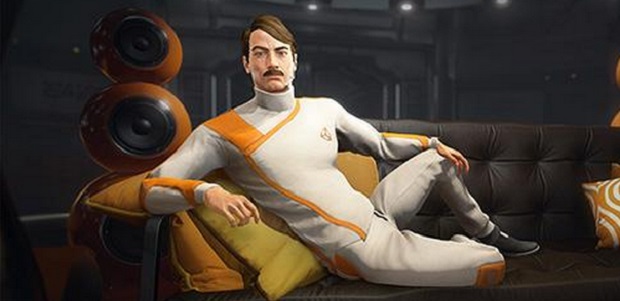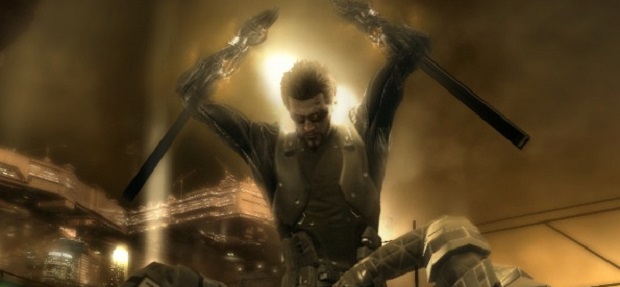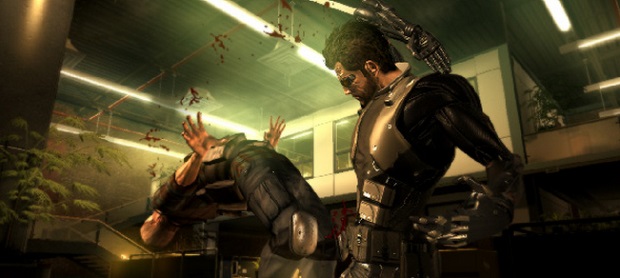Multiple Endings vs. Split Ends: The Value Of New Tech
Hair Raising Questions
I've seen Adam Jensen from Deus Ex 4* and his hair is lustrous.
I like to make the time at every GDC to attend one talk I almost certainly won't understand, because it's useful to remind ourselves every now and then of the absurd technology that underpins the games we play. This year I picked Augmented Hair In Deus Ex Universe Projects, because not only does it fit this mission, but I thought I might get lucky and hear a few hints about Deus Ex 4.
Instead I left the talk with a question: does anyone really care this much about hair?
*The hair tech is going to be in future Deus Ex games and Adam Jensen was one of three models used to model the technology, but that doesn't necessarily mean Jensen will appear in the game itself.
Did you know that the most important part of making convincing hair is translucency? This is what AMD's research says. Eidos Montreal are working with the graphics card manufacturer on advancing TressFX, tech first built by AMD and Crystal Dynamics for use in the rebooted Tomb Raider. (Yes, this means that Adam Jensen has better hair than Lara Croft).
Translucency is important because it dictates the quality of the lighting and the perceived thickness of each hair strands. It's impressive of course that TressFX works by simulating hair as actual individual strands, with independent weight and physics movement that allows it to tangle, curl, move in the wind and so on. There's a bunch of interesting things Eidos Montreal are doing in order to make that processor efficient, but I didn't understand them. I do know that even Jensen's beard is made of individual simulated hairs, though.
Here is an example of a thing I didn't understand:
Per Pixel LL with depth pre-pass
Optimizes the PPLL implementation if the depth pre-pass cost benefits the other passes.
Usually a win when using LODs.
Allows smaller K(overdraw) for the same quality (~ 3)Depth peeling:
Use atomics to compute closest depth 0 and 1
Fill nodes only if they are entry 0 or 1
Similar performance than PPLL with depth pre-pass
Half memory cost with no possible PPLL overflow"
I use Radox combined shower gel and shampoo because it's half the memory cost for the same quality (~ 3) too!
Here is an example of another thing I don't understand. Every year when I come to these kinds of talks, the same questions whirl around my (hairy) head: did any player of Deus Ex: Human Revolution have a problem with the quality of the character's hair? Was there any player who looked beyond the robot limbs and toward the motionless hat-hair of the transhuman security guard and thought, "I didn't ask for this"? Will any of the Deus Ex Universe projects sell more copies because AMD and Square Enix spent money, time, effort on making sure the player's curls moved realistically in relation to their skull gun?
This isn't limited to Eidos Montreal or Deus Ex, of course. When talking to Dorian Newcomb, art director on Offworld Trading Company, I asked him if anything was surprising about people's response to the early access release. He said, and I'm paraphrasing, 'They thought it looked good.' In the minds of Newcomb and the game's other artists, its look was about a third of the way towards where they wanted it to be. In the minds of the playerbase, it was already fine - which raises the question of whether it's worth improving it further.
Perhaps this is just selection bias - people who have already bought the game are obviously more likely to think that it already looks good enough - but I think it speaks to a broader trend. There are more and more alpha games being released with stock assets and random, empty terrain, and they're finding success anyway. It seems wholly possible that companies are overestimating the importance of presentation.
Certainly I often find myself enjoying a characterful animation or responsive menu button, but I value those things fairly low when it comes to writing about a game. If I play something that's barebones in its presentation, I'm more likely to assume others won't like it for that reason than I am to have a problem with it myself.
Of course, it's natural that people with a specific job - ie, art directors - are going to want to do that job as well as they possibly can. It's also possibly foolish to assume that putting less resource into art would allow a company to put more resource into, for example, making a game more responsive to your decision - budget and staff allocations don't necessarily work that way.
But when companies are closing down left and right and developers are crunching staff into fleeing the industry, what is the value in pouring resource into more accurately coiffed bonces?
Let's put it another way, and I'm genuinely asking: the only thing I've learned about Deus Ex 4 is that its characters will have fabulous hair, but are they worth it?
This article was first published as part of, and thanks to, The RPS Supporter Program.





